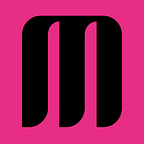Dreampad Connected Pillow REVIEW
Share on FacebookShare on TwitterShare on Pinterest
I have struggled for years to get a good night’s sleep. I’ve switched out pillows numerous times and tried lots of different sound machines just to get my brain calmed down at night so that I can sleep well. No combination has really been completely successful. So I thought I would try one of the newest options on the market the Dreampad. The Dreampad is a specialized pillow that has built-in speakers in it to help soothe you to sleep.
Dreampad has a very interesting history. It was originally designed as a relaxation tool for children — particularly those with trauma or autism. As a calming technique, Dreampad was proven successful and parents of the children being helped began ‘borrowing’ it from their kids. So designers set to work and in 2016, they released four pillows for adults along with the helper app that is specifically designed to assist with deep sleeping. Dreampad engineers have worked endless hours bringing this product to market and waded through buckets of research.
Third party researchers have measured the effects of the Dreampad on various groups, including ADHD, Autism, PTSD, seniors, and adults with stress-related sleep challenges. Some of these were formal studies intended for publication, some were less formal pilot studies. In all cases, the results were powerful indications of the product’s unique impact on relaxation and sleep.
The four different pillow styles are Memory Support, Firm Support, Medium Support, and Slim Support. I have the Memory Support as I really enjoy memory foam as a resting mechanism. The pillow is a standard/queen size (20″ x 28″) and is hypoallergenic. Even though I referred to it as a built-in speaker, Dreampad calls it embedded Intrasound Technology. It works like a speaker but uses your body’s natural ability to conduct vibrations and sound through your bones to send sound to your ear. This technology makes it possible for others not to be disturbed and it also triggers your body’s relaxation response.
Clinical data suggests that the calming effect of the Dreampad is a result of the vibrational music stimulating the vagus nerve, which in turn activates the parasympathetic nervous system (PNS). Our PNS helps us regulate stress — if we’re in a state of hyper-arousal, or elevated stress, the PNS is the part of our nervous system which brings us down to a calmer place where we can relax and fall asleep.
I am often in that ‘place’ where I can’t easily fall asleep. Most of the time it has to do with the day’s activities just rolling around in my head. So, I’m kind of a great test case for the Dreampad. The first thing I did before settling in for a night’s sleep was to download the app. It works similarly to other streaming music or iTunes library apps. You can’t listen to other music while you are listening to the app’s tracks. There are 10 different tracks you can listen to while you relax. They are a combination of music and ambient noises that are designed to stimulate relaxation. I chose to listen to Seaside Strings, which is a blend of ocean waves and a viola. Once you select a track, you then choose your volume setting. You want to be careful not to turn up the volume too loud as that can cause stimulation rather than relaxation.
Next, I set a timer, which tells the app how long to play the music before shutting off. You can theoretically play music all night, but it’s really just meant to get you to sleep. You can also select an alarm time. When it’s time to wake up, the Dreampad app will play a gentle melody to wake you up. After everything was set up, I got comfortable and laid down for sleep. I am hard of hearing and I was concerned that maybe I wouldn’t be able to hear the soft music playing. Surprisingly enough, I was able to quite easily. I was replaying the day’s events in my head over and over, but I found myself drifting off to sleep in spite of the all consuming thoughts. To that end, I feel as though the Dreampad did its job.
As for the memory pad pillow part, I found it to be very, very soft. I would have loved it if it was just a bit more firm. I sort felt as though I just sunk into it. It wasn’t uncomfortable per se, but it wasn’t the perfect pillow for me either. Another slight issue I had was connectivity. You connect to the Dreampad through a standard 3.5mm stereo headphone cable. The connected cable is fairly short, but Dreampad includes an extension, which came in quite helpful. My issue was that I have an iPhone 7 Plus and it does not have a headphone jack. I had to use a Lightning adapter to be able to plug into the pillow. There is a Bluetooth adapter for the pillow, but it’s sold separately. It would have come in quite handy for my situation.
I really like the concept of the Dreampad and can see how it can work for many different people who have trouble sleeping.
BUY FROM AMAZON
For more information, visit dreampadsleep.com.
Find Dreampad on Facebook and Twitter.
Originally published at macsources.com on August 7, 2017.
